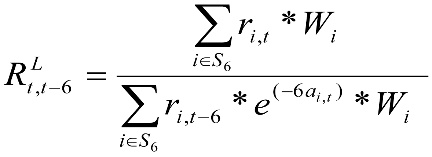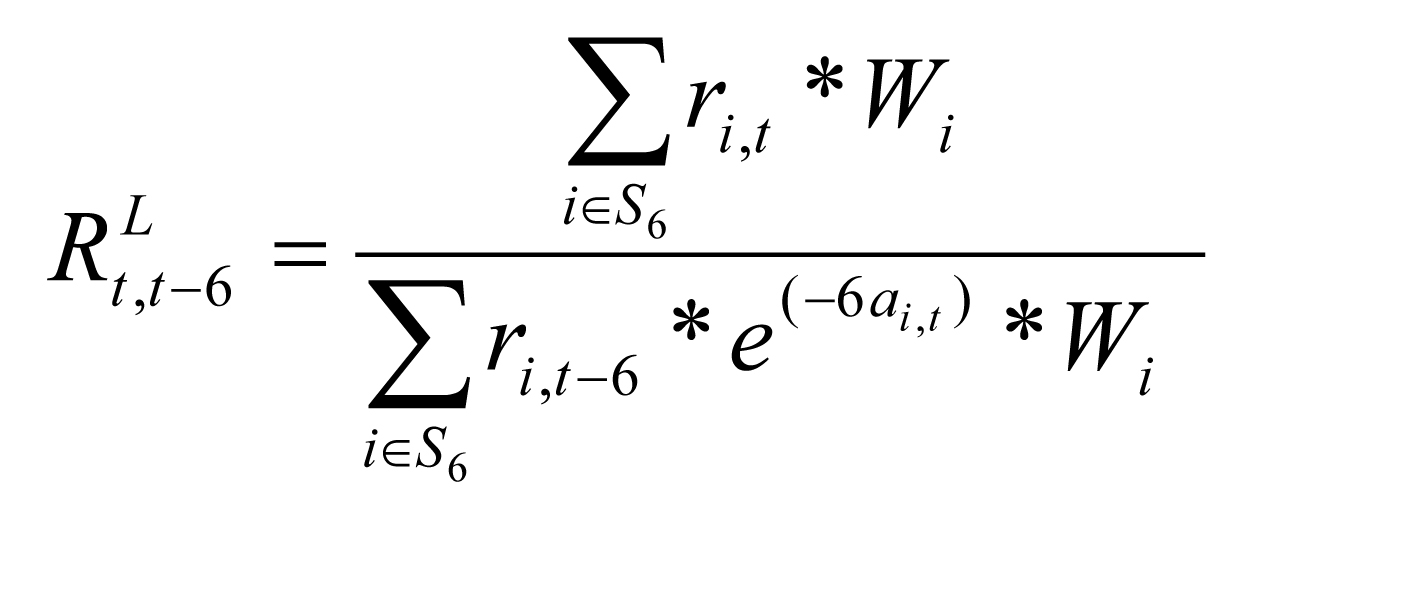1220_0163_Supporting Statement Part B_April2 Final
1220_0163_Supporting Statement Part B_April2 Final.docx
Consumer Price Index Housing Survey
OMB: 1220-0163
Consumer Price Index Housing Survey
OMB Number 1220-0163
April 2019
SUPPORTING STATEMENT
Consumer Price Index Housing
B. COLLECTION OF INFORMATION EMPLOYING STATISTICAL METHODS
Starting in January 2018, the CPI Housing Survey sample used 75 geographic areas or Primary Sampling Units (PSUs) nationwide to be the boundaries from which rental housing units were selected based on 2010 Census data. Technical details of the sample design and estimation procedures of the Consumer Price Index are provided in Chapter 17 of the BLS Handbook of Methods, as well as "Redesigning the Consumer Price Index Area Sample" by Johnson, Shoemaker and Rhee, from the 2002 ASA Proceedings, and “The 2018 revision of the Consumer Price Index geographic sample” by Paben, Johnson, and Schilp from the October 2016 Monthly Labor Review. A copy of Chapter 17 (Attachment VII) and the October 2016 Monthly Labor Review (Attachment VIII) are included.
1. Universe and Sample Size
The universe for the CPI Housing Survey consists of all urban rental-housing units used as primary residences. The number of year-round rental-housing units in the universe is approximately 46 million units.* These units are distributed:
Renters 43,000,000
Vacant 3,216,000
* Source: Table 4. Estimates of the Total Housing Inventory for the United States: 2017, Housing Vacancies and Homeownership (CPS/HVS), U. S. Census Bureau.
The Rent index measures changes in rents paid by tenants and received by landlords adjusted for changes in quality. The Owners’ Equivalent Rent index (OER) measures the change in the implicit rent for owner-occupied housing. The implicit rent is the amount the homeowner would pay to rent, or earn from renting his/her home in a competitive market. It is for the construction of these indexes that a sample is selected and information gathered. The current sample based on the 2010 Census uses approximately 8,600 segments with five units per segment, or, 43,000 rental units in 75 PSUs.
2. Collection Procedures
The collection instruments for computer-assisted data collection (CADC) are found in Attachments II.
2. a. Description of Sampling Methodology
A
multi-stage sampling process is used in the CPI. For Housing the
main steps are:
(1) the sampling of geographic areas
(segments);
(2) configuration and weighting of selected
segments;
(3) the purchase of coded addresses for selected
segments;
(4) the elimination of addresses with a very high
probability of being owners and addresses that can be identified as
commercial and post office boxes;
(5)
the sampling of specific addresses in the segments;
(6) the
telephone/personal visit screening and initiation of eligible
addresses from which rent prices will be followed over time.
2. b. Description of Estimation Methodology
The CPI-U and CPI-W are defined as fixed quantity price indexes, and are the ratio of the cost of purchasing a set of items of constant quality and constant quantity in two different time periods. The published CPI for the Rent and Owners’ Equivalent Rent (OER) strata uses a Laspeyres estimator.
The
Laspeyres index,
 ,
where t is the comparison period for which a new index will
be calculated and 0 the reference period, can be denoted by:
,
where t is the comparison period for which a new index will
be calculated and 0 the reference period, can be denoted by:

where:
 is the price for the ith item in comparison period t,
is the price for the ith item in comparison period t,
 is the price for the ith item in reference period 0,
is the price for the ith item in reference period 0,
 is the quantity of the ith item consumed in the reference
period 0.
is the quantity of the ith item consumed in the reference
period 0.
The indexes for the Rent and OER strata are specifically calculated as follows:
Let
 be the set of rental units interviewed in the Housing survey in
time t in a market basket with valid comparable rents in both
time t and t-6. Vacant units that were previously
renter occupied are also included in
be the set of rental units interviewed in the Housing survey in
time t in a market basket with valid comparable rents in both
time t and t-6. Vacant units that were previously
renter occupied are also included in
 and
have current (t) and previous (t-6) month's rents
assigned using a vacancy imputation process. Non-interviewed units
that were previously renter occupied are also included in
and
have current (t) and previous (t-6) month's rents
assigned using a vacancy imputation process. Non-interviewed units
that were previously renter occupied are also included in
 and
have current (t) and previous (t-6) month's rents
assigned using a non-interview imputation process. Let the rent for
rental unit i in time t be
and
have current (t) and previous (t-6) month's rents
assigned using a non-interview imputation process. Let the rent for
rental unit i in time t be
 and
let
and
let
 be a
factor that adjusts for the estimated small loss in quality due to
the aging it experienced between t-1 and t. The
6-month estimate of rent change is calculated by:
be a
factor that adjusts for the estimated small loss in quality due to
the aging it experienced between t-1 and t. The
6-month estimate of rent change is calculated by:

where:
![]() is the inverse probability of selection adjusted for non-response for
renter unit i.
is the inverse probability of selection adjusted for non-response for
renter unit i.
Using
 and
the index for the previous month,
and
the index for the previous month,
 , the
BLS computes the current month's rent index,
, the
BLS computes the current month's rent index,
 , as
follows:
, as
follows:

The final Rent and OER indexes for month t for each market basket are last month's index times the sixth root of the six-month relative.
The rents for renters are obtained directly. The basic weights for Rent and OER were computed with the initiation of the sample design.
2. c. Degree of Accuracy Required
The statute mandating the CPI does not specify a required precision or accuracy for the index. However, the BLS does provide measures of the standard error for the All U. S. CPI (CPI-U) and for the Northeast, Midwest, South and West Regions CPI (CPI-U). The most recent standard error data can be viewed at https://www.bls.gov/cpi/tables/variance-estimates/home.htm. The BLS also requires that the precision of the CPI be maximized given the total cost. The allocation of the Rent sample was optimized given a fixed cost constraint with the stipulation that the variances of the Rent Index and the Owners' Equivalent Rent index be approximately equal.
For example, the estimate of the CPI-U median standard error for 12-month intervals from January 2017 through December 2017 was 0.10 for Rent of Primary Residence; and 0.10 for Owners’ Equivalent Rent of Residences.
2.d. Special Sampling Procedures
Due to the difficulty in contacting some respondents, data on the rental units are collected through most of the index month.
2.e. Use of Periodic Data Collection Cycles
The rental units in the CPI survey are divided into 6 subsamples, called panels. Each month one panel (one-sixth of the renter units) is collected. For example, panel 1 is collected each January and July, and panel 2 is collected each February and August. Collecting each panel twice a year reduces the burden on each respondent.
3. Methods to Maximize Response Rates
The Bureau of Labor Statistics has constantly engaged in research to improve the quality of the data collected and used in the CPI Housing indexes. The CPI collects data in a sample of 75 metropolitan areas called Primary Sampling Units. The majority of the current sample, 43,000 rental units, were selected based on 2000 Census data. It is of paramount importance to the BLS to replace these units with units selected on the basis of 2010 Census data.
The survey design for the new sample of rented units has an important feature: Commercially available address lists are used in place of a labor-intensive manual listing process, resulting in significant cost savings. A vendor supplies these addresses for each newly-created segment. For each address the vendor provides codes indicating that addresses probability of being owner occupied. Since owners are out of scope for the Housing Survey, addresses that are most certainly owners are removed. Addresses that can be identified as commercial and post office boxes are also removed. Once commercial and owner occupied addresses are removed, SMD samples the remaining set of units to be sent out for initiation.
The BLS utilizes several techniques to insure that adequate sample sizes and response rates are maintained for estimating the CPI. Initial sample sizes are larger than the desired sample sizes to cover non-responses, e.g., refusal, unable to locate, housing units that convert to owner occupied, non-contact, and also hard-to-reach, among other reasons.
Response rates are tracked. In addition, Economic Analysts collect the data are trained to obtain complete address and telephone information for all possible eligible respondents--tenants, managers or authorized respondents--in order to complete the survey. Any potential respondent may be contacted by telephone or in person at any time during the index collection month time period. In 2017 a rent was collected for 69.2% of attempted units, 6.5% of units were reported as vacant, and the non-response rate was 24.3%.
In the CPI Housing survey, two types of imputations are employed. For non-responding units, a current price is imputed based on the movements of other units within the PSU. Units that are reported as vacant have rents imputed for them as well. Rents for newly vacant units, that have become vacant within the previous six months, are imputed using rent changes for responding units that have been occupied by the current tenant for six months or less. Rents for longer term vacant units are imputed using responding changes for units that have been occupied by the current tenant for longer than six months. For both types of imputations, group-mean imputation is used.
4. Testing Plans/Procedures
Periodically, the CPI may test a new procedure or method to determine its validity. Prior to testing of any new questions CPI will submit a non-substantive change to OMB for approval.
5. Statistical Contacts
The Acting Assistant Commissioner for Consumer Prices and Price Indexes (telephone 202-691-6955) and Robert G. Poole, Division of Price Statistical Methods in the Office of Prices and Living Conditions of the BLS (telephone: 202-691-6910) have reviewed and approved the statistical methodology for the survey design. The Office of Field Operations of the BLS will collect all data. The data will be processed by the Division of Consumer Price Computer Systems of the Directorate of Survey Processing of the Office of Technology and Survey Processing of BLS. David M. Friedman, Associate Commissioner, Office of Prices and Living Conditions of BLS has overall responsibility for the CPI.

OMB Supporting Statement Attachments:
Code of Laws—Title 29
Screen Shots—Collection Instrument for Housing
Housing Survey Brochure
Housing Introductory Letter
Housing Screening Questionnaire Form
Housing Screening Follow-up Letter
Chapter 17. The Consumer Price Index (Updated 2-14-2018)
https://www.bls.gov/opub/hom/pdf/homch17.pdf
Steven P. Paben, William H. Johnson, John F. Schilp. “The 2018 revision of the Consumer Price Index geographic sample”. Monthly Labor Review, October 2016.
https://www.bls.gov/opub/mlr/2016/article/the-2018-revision-of-the-CPI-geographic-sample.htm
Housing Shuttle Form – Long Pricing
Housing Shuttle Form – Short Pricing
FY2020 Proposed Changes to Rent Screen and Lease Questions
| File Type | application/vnd.openxmlformats-officedocument.wordprocessingml.document |
| Author | Nora Kincaid |
| File Modified | 0000-00-00 |
| File Created | 2021-01-20 |
© 2025 OMB.report | Privacy Policy